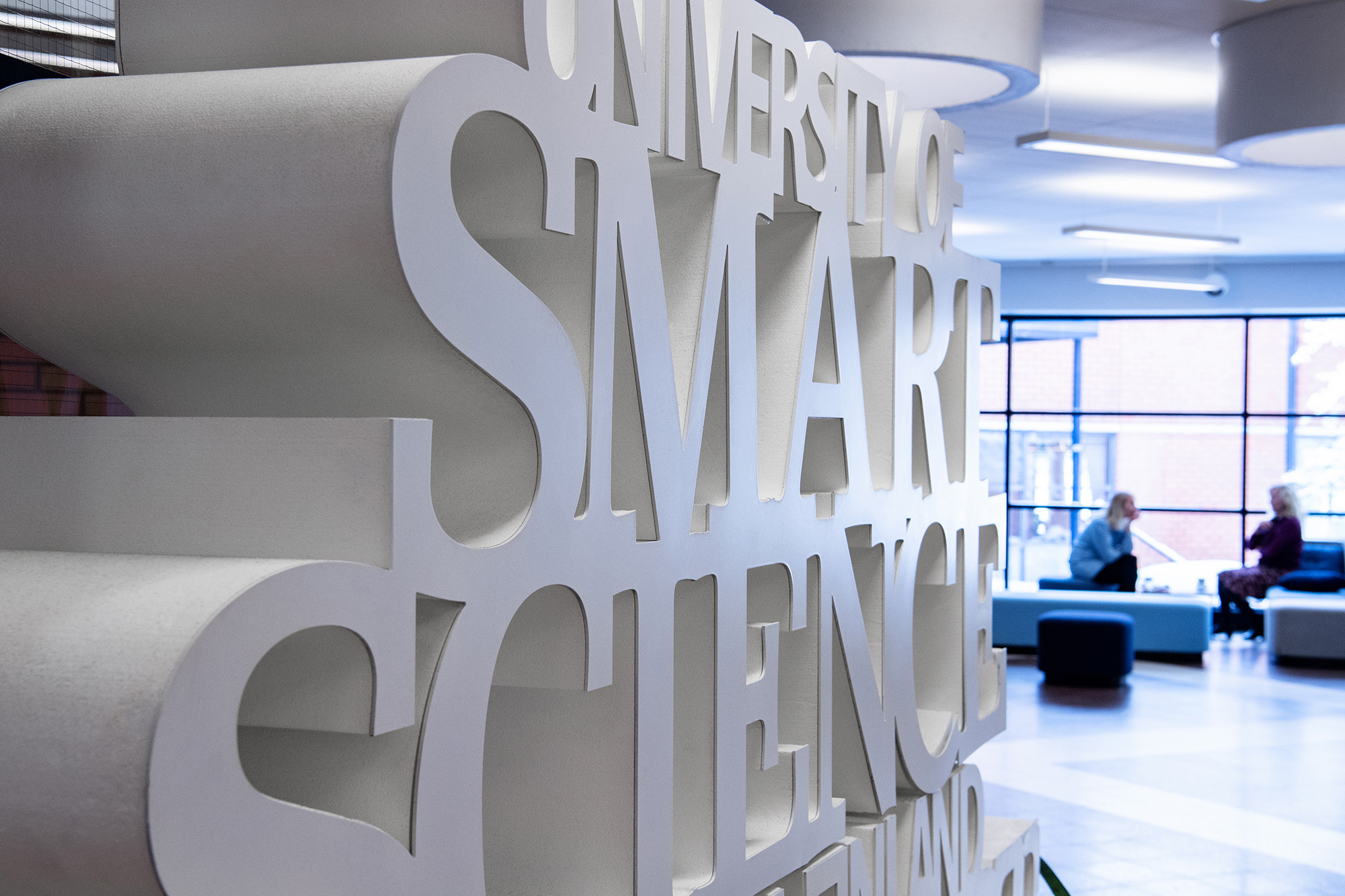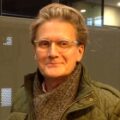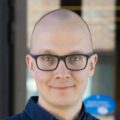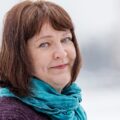
SENSOTRA
Johtajat
Aistitut elinympäristöt muutoksessa: ylisukupolviset ympäristösuhteet Euroopassa 1950–2020
SENSOTRA-hankkeessa tutkimme eri sukupolvien edustajien kokemuksia omasta elinympäristöstään. Olemme projektissa kiinnostuneita esimerkiksi siitä, miten erilaiset laitteet ja teknologiset apuvälineet vaikuttavat ihmisten elämään, ja kuinka eurooppalaiset hahmottavat aistittua elinympäristöään
Kulttuurintutkimuksen professori Helmi Järviluoman johtama Sensory Transformations and Transgenerational Environmental Relationships in Europe, 1950–2020 (SENSOTRA) -tutkimus on viisivuotinen hanke, jossa tuotetaan kipeästi kaivattua uutta tietoa ja ymmärrystä siitä, miten aistitut elinympäristöt ja erityisesti ihmisten kokemukset aistiympäristöistään ovat muuttuneet Euroopassa vuosien 1950–2020 välillä. Tieteidenvälisessä hankkeessa keskitytään tutkimaan ylisukupolvisia ympäristösuhteita esimerkiksi aistielämäkertojen avulla. Hankkeelle on myönnetty 1,9 miljoonan euron Euroopan tutkimusneuvoston varttuneen tutkijan (ERC Advanced Grant) tutkimusmääräraha.
Tutkimus on erityisen ajankohtainen sen vuoksi, että tällä hetkellä on vielä mahdollista tehdä kenttätyötä eli tutkia etnografisesti 1930–40-luvuilla syntyneitä sukupolvia, jotka elivät lapsuutensa ja nuoruutensa ennen tietokoneiden ja digitaalisten laitteiden aikaa. Toisaalta samaan aikaan hankkeessa tutkitaan niin sanottuja diginatiiveja, nuoria, jotka ovat syntyneet digitaalisten älylaitteiden aikaan eli aikaan, jona moniulotteisten ympäristösuhteiden säilyttäminen on uusien haasteiden edessä.
Projektissa keskitytään kolmeen teemaan:
- Muutokset aistikokemuksen välittymisessä
- Aistit ruumiillisen muistamisen välineenä
- Aistimisen yhteistoiminnallisuus
Tutkimusta tehdään myös yhteistyössä eri alojen taiteilijoiden kanssa. Tähän saakka laajin aistiympäristökokemusten empiirinen tutkimus toteutetaan kolmessa keskisuuressa eurooppalaisessa kaupungissa: Ljubljanassa, Turussa ja Brightonissa.
Ajankohtaista
-
 SENSOTRA Twitterissä
SENSOTRA TwitterissäSENSOTRA Twitterissä
Ajankohtaiset kuulumiset löydät Twitter-tililtämme. -
SENSOTRAn blogi
SENSOTRAn blogi
Blogissamme tarinoita tutkimuksen takaa.
-
2021
Järviluoma, Helmi (in print) 2021. Sensobiographic Walking and Ethnographic Approach of the Finnish School of Soundscape Studies. In Stahl, Geoff & Mark Percival (Eds) The Bloomsbury Handbook of Popular Music and Place. London: Bloomsbury. (In print, 29 July, 2021).
Abram, Sandi (in print) 2021. Sensing Transformations of Urban Ambiances: A Sensobiographic Approach in a Turistified City on the Semi-Periphery of Late Capitalism. In Iñigo Sánchez, Daniel Paiva & Daniel Malet Calvo (Eds): Urban Ambiances for Tourist Consumption. London & New York: Routledge.
2020
Pöllänen, Sonja and Arjoranta Jonne (forthcoming) 2020. “Whose were those feelings?” – affect, likeness and power of the false in Halat hisar live action role-playing game. European journal of cultural studies. SAGE. ISBN 13675494 [Primary author]
Järviluoma, Helmi 2020. “Dis-placement”, Aging and Remembering– Case Study of a Transnational Family. In Grenier, Line & Valois-Nadeau, Fanny (Eds) A Senior Moment: Cultural Mediations of Memory and Ageing. Transcript publications. Aging Studies Vol. VII, pp. 165–194.
Hynynen, Ari, Inari Aaltojärvi, Anu Hopia & Heikki Uimonen 2020. Emotional diners and rational eaters – Constructing the urban lunch experience. Journal of Urbanism. https://doi.org/10.1080/17549175.2020.1762706
Venäläinen, Juhana, Sonja Pöllänen & Rajko Muršič & 2020. The Street. In Holger Schulze (Ed) The Bloomsbury Handbook of the Anthropology of Sound. New York: Bloomsbury. http://www.mediumflow.de/anthropology-of-sound/
Muršič, Rajko, Blaž Bajic & Sandi Abram (Eds) 2020. Občutki mest: Antropologija, umetnost, čutne transformacije [Senses of Cities: Anthropology, Art, Sensory Transformations] Ljubljana: Oddelek za etnologijo in kulturno antropologijo, Filozofska fakulteta, in print.
Uimonen, Heikki 2020. Music while you walk. Dialogic Construction of a Place Among the Music Listening Urbanites. In Muršič, Rajko, Blaž Bajic & Sandi Abram (Eds) Občutki mest: Antropologija, umetnost, čutne transformacije [Senses of Cities: Anthropology, Art, Sensory Transformations]. Ljubljana: Oddelek za etnologijo in kulturno antropologijo, Filozofska fakulteta, in print
Uimonen, Heikki 2020. Tämän maailman äänet: kuultu, koettu ja muisteltu kotiseutu. In Sulevi Riukulehto (ed). Kotiseutu verkossa. SKS (forthcoming 2020).
Uimonen, Heikki 2020. Sensobiography and Tangible Music. Theoretical and Methodological Approaches. Musiikki (forthcoming 2020).
Uimonen, Heikki 2020. Kertojien kaupungit: Aistielämäkerrallinen kävely ympäristön ja muistamisen tutkimusmenetelmänä. Alue ja ympäristö (forthcoming 2020).
Abram, Sandi. 2020. “What a monstrous development that was”: Sensory Modernization of Ljubljana in the early 20th Century. In Muršič, Rajko, Blaž Bajic & Sandi Abram (Eds) Občutki mest: Antropologija, umetnost, čutne transformacije [Senses of Cities: Anthropology, Art, Sensory Transformations] Ljubljana: Oddelek za etnologijo in kulturno antropologijo, Filozofska fakulteta, in print.
2019
Tiainen, Milla, Inkeri Aula & Helmi Järviluoma 2019. Transformations in mediations of lived sonic experience: A sensobiographic approach. In Riedel Friedlind & Juha Torvinen (Eds) Music as atmosphere: collective feelings and affective sounds. Routledge series: Ambiances, atmospheres and sensory experiences of space. London & New York: Routledge, pp. 238–254.
Murray, Lesley & Järviluoma, Helmi 2019: Walking as Transgenerational Methodology. Qualitative Research (Sage) Volume: 20 issue: 2, pp. 229-238. [Online: 2019; print 2020.] https://doi.org/10.1177/1468794119830533
Järviluoma, Helmi 2019. ”Kaikki elämän makeus ja riemu”. Aistielämäkerrallisen kävelyn taide ja tiede. [All sweetness and joy of life. Sensobiographic walking as art and science] In Torvinen, Juha & Susanna Välimäki (Eds) Musiikki ja luonto. Soiva kulttuuri ympäristökriisin aikakaudella. Turku: UTUkirjat, pp. 221–245.
Uimonen, Heikki 2019. Uhanalaiset puulajit ja kitaramarkkinoiden muutos. In Torvinen, Juha & Susanna Välimäki (Eds) Musiikki ja luonto. Soiva kulttuuri ympäristökriisin aikakaudella. Turku: UTUkirjat.
Tiainen, Milla 2019. Ihmisäänen kolme ekologiaa: Guattari, Leväooppera ja enemmän-kuin-inhimillinen. In Torvinen, Juha & Susanna Välimäki (Eds) Musiikki ja luonto. Soiva kulttuuri ympäristökriisin aikakaudella. Turku: UTUkirjat.
Aula, Inkeri & Regina Helena Alves da Silva 2019. https://www.letraevoz.com.br/produtos/historia-oral-e-direito-a-cidade-andrea-casa-nova-maia Metodologia sensobiográfica: novos conhecimentos sobre o sensório urbano (Published in Portuguese). In: História oral e direito à cidade. Pp. 87-108. São Paulo: Letra & Voz.
Uimonen, Heikki, Maija Kontukoski & Anu Hopia 2019. ”Narinajuustoa ja karviaishilloa: moniaistiset muistot osana yhteistä ruokailutapahtumaa.” Kulttuurintutkimus 35 (3). https://journal.fi/kulttuurintutkimus/article/view/83637.
Kontukoski, Maija & Heikki Uimonen 2019. ”Tila, tunne ja musiikki – kauppakeskuksen ääniympäristön laadullinen tarkastelu”. Yhdyskuntasuunnittelu-Lehti 57 (2), 10-25. https://doi.org/10.33357/ys.83675.
Abram, Sandi & Blaž Bajic 2019. Senso-biographic Walking: Between the Anthropology of the Senses and the Anthropology of Digital Technologies (Published in Slovenian) Bulletin of the Slovene Ethnological Society 59(1). Ljubljana: Slovene Ethnological Society. https://www.sed-drustvo.si/domains/sed-drustvo.si/modules/Domino/Files/glasnik-sed-59-1-2019.pdf
Muršič , Rajko 2019. Experiencing Improvisation in the Embrace of Algorithms: Digital In-betweenness and Pre-digital Three-dimensionality of Everyday Life. (Published in Slovenian) Bulletin of the Slovene Ethnological Society 59(1), pp. 17-26. Ljubljana: Slovene Ethnological Society. https://www.sed-drustvo.si/domains/sed-drustvo.si/modules/Domino/Files/glasnik-sed-59-1-2019.pdf
Uimonen, Heikki 2019. Practical Idealism: Live Music Associations and the Revitalisation of the Music Festival Scene. IASPM Journal. London: International Association for the Study of Popular Music (IASPM). https://iaspmjournal.net/index.php/IASPM_Journal/issue/view/67
Uimonen , Heikki 2019. Evening of Sounds: Auditory Cultures in Radio Call-in Programmes. Sound, Media, Ecology. London: Palgrave MacMillan
Bajič , Blaž 2019. Nose-talgia, or, Olfactory Remembering of the Past and the Present in a City in Change. Ethnologia Balkanica: Journal for Southeast European Anthropology, Vol 22. International Association for Southeast European Anthropology (InASEA), the Institut für Volkskunde/European Ethnology at Munich University, Ethnographic Institute with Museum of the Bulgarian Academy of Sciences, Sofia.
2018
Aula, Inkeri 2018. Aistikävely kaupunkimaisemaan – yhteisen tilan kokemus ja joutomaiden polut (Sensory walk into urban landscape). Elore 25 (1): Ajatteleva maisema, 74-95. Suomen Kansantietouden tutkijain seura. https://journal.fi/elore/issue/view/1-2018
Järviluoma, Helmi and Jari Ruotsalainen 2018. Betoniporsaita avoimen tiedon valtatiellä. SENSOTRA-hanke tietosuojalainsäädännön murroksessa. Elore 25 (2). Suomen Kansantietouden tutkijain seura. doi: 10.30666/elore.77216
Järviluoma , Helmi 2018. Äänimaisematutkimuksen alkuvaiheet Suomessa 1989–1999: korvintodistajan kertomus. Musiikin Suunta. Finnish Society for Ethnomusicology. http://musiikinsuunta.fi/2018/03/aanimaisematutkimuksen-alkuvaiheet
Järviluoma, Helmi 2018. Aisti-iloja Hupelissa – vanhan Vuonislahden varjo kaiken takana. [Sensory joys in Hupeli.] http://www.vuonis.net/sivut/1_2018/3_Aisti-iloja_Hupelissa.pdf Vuonislahti-lehti 28.1.2018. Vuonislahti Society.
Aula , Inkeri 2018. Aistit, muistot ja teknologia kokemuksen välittäjinä. AntroBlogi. https://antroblogi.fi/2018/10/aistit-muistot-ja-teknologia-kokemuksen-valittajina/
2017
Järviluoma , Helmi 2017. The art and science of sensory memory walking. The Routledge Companion to Sounding Art. Cobussen, Marcel & Vincent Meelberg & Barry Truax (Eds). New York: Taylor & Francis, 191–204.
Helmi, Järviluoma 2017. Aistien – lyhyt oppimäärä. [Sensing – A brief history] Radiofeature. Radioateljee, 27.10. available at https://erepo.uef.fi/handle/123456789/7856
Järviluoma, Helmi 2017. Sukupolvet veden ääniä kuuntelemassa. In: Muuttuvat suomalaiset äänimaisemat. Tampere: Tampere University, pp. 125-141 http://www.oapen.org/search?identifier=624254
Abram, Sandi 2017. Samonikla kreativna fabrika v času neoliberalne mašine kreativnih industrij (The Grassroot Creative Factory in the Age of the Neoliberal Machine of Creative Industries). Journal for the Critique of Science, Imagination, and New Anthropology 270, 17-31. Institute for the Critique of Science. Ljubljana, Slovenia. http://www.ckz.si/images/objave/Sandi_Abram_The_Grassroots_Creative_Factory_in_the_Age_of_the_Neoliberal_Creative_Industries_Machine_a.pdf
Bajic , Blaž 2017. The Old for the New. (Published in Slovenian) Bulletin of the Slovene Ethnological Society 57(1-2), pp. 33-37. Ljubljana: Slovene Ethnological Society. https://www.sed-drustvo.si/domains/sed-drustvo.si/modules/Domino/Files/glasnik-sed-573-4-2017.pdf
Muršič, Rajko 2017. Ethnographic Being and the Essence of Anthropological Knowledge: On Manifoldness in Intellectual Ontological Fashion and the Banality of Everyday Reality. (Published in Slovenian) Bulletin of the Slovene Ethnological Society 57(1-2), pp. 27-32. Ljubljana: Slovene Ethnological Society. https://www.sed-drustvo.si/domains/sed-drustvo.si/modules/Domino/Files/glasnik-sed-573-4-2017.pdf
2016
Venäläinen, Juhana 2016. Kuuloyhteisistä kuuntelunvapauteen: kaikupohjia äänimaisemien kestäville käyttökulttuureille. In: Järviluoma, Helmi & Ulla Piela (Eds) Äänimaisemissa. [Inside soundscapes.]Helsinki: SKS, 34–52.
Tapahtumat ja uutiset
Alla on listattu hankkeen aikana toteutettuja tapahtumia sekä julkaistuja uutisia.
-
Urban Related Sensoria: Environments, Technologies, Sensobiographies
International Conference on Sensory Transformations, 10—12 June, 2020 to be held ONLINE
Urban-Related Sensoria: Environments, Technologies, Sensobiographies addresses the embeddedness of people’s senses of self and the environment and their related biographical accounts in urban space.
The conference will address issues related to shifts in lived and experienced cities from artistic and everyday perspectives, which center around five thematic streams:
- Body, walk, paths, and remembering
- Mediations of sensory experience at the level of the everyday
- Sensory commons
- Senses, hierarchies, and multisensoriality
- Sensory methodologies
-
Anthropology and/as mediation(s)
CREOLE Intensive Program / SENSOTRA Seminar, Lyon, 23rd-30th June 2019
Main topic: Anthropology and/as mediation(s)
Although it is not a very common concept in anthropology, the term “mediation” allows us to explore different practical and theoretical dimensions in contemporary anthropology. In its common utterances, mediation may be defined as “translation”, “negotiation”, “intervention”, “interpretation”, “diffusion”, etc. We propose to question the notion of mediation and mediations in anthropology around four main and complementary strands:
Mediations, ethnography, fieldwork
The notion of mediation first questions the different kinds of interactions and relationships that anthropologists develop during their fieldwork and more broadly the research process. As ethnography itself is frequently conceived as dialogue and interlocution, it implies a reflection on fieldwork as a situation of communication (verbal as well as non-verbal), also including misunderstandings and asymmetries, narrations and translations, cross and pluricultural dimensions, etc. The “augmented” dimensions of social life (internet, digital practices, social networks, etc.) question the multiple mediations through which anthropologists construct and interact with plural and multi-layered fieldworks.
Mediations, media, creation
The mobilization of diverse media (film, sound, drawing, etc.) in the making and displaying of anthropological research provides a first way to apprehend mediation in terms of producing and sharing knowledge. It covers a wide scope of practices and intentions, from the use of different “documents” (images, sounds, etc.) as a part of the ethnographical work, to the more or less wide public exposure of anthropological works and productions. Beyond the frequent use of visual and sound items, this call for a wider range of media suggests that aesthetic and artistic expressions (choreographic, drama, fieldwork as scene, etc.) have to be taken into account, hence tackling the usual distinctions between science and art, or research and creation.
Mediations, senses, perceptions and actions.
Sensory anthropology and preoccupations on the notions of environment, ambiance or experience as perceptual and relational situations, help at renewing our conceptions of inhabiting and acting in the world and with others, humans as well as non humans. It leads us to apprehend life in general as a continuous making through experiences, symbolic and social as well as cognitive and embodied. As already pointed out, the multisensory dimension of the research experience is not only visual and phonic, but can also concern tactile, gustative or olfactory ways of making (and disseminating) research. “Sensing the world” questions the classical and artificial boundaries between subjects and objects, making and thinking.
Mediating, cooperating, translating.
Anthropology is not a homogeneous and isolated discipline, but takes the shape of plural perspectives, ways of doing and communicating research. In that sense, Mediation concerns cooperation and intervention with and among different social and professional worlds, partners and makers (artistic, cultural, and potentially in all fields of research: urban studies, health, development, environment, etc.). Another dimension of mediation addresses a trans-and pluridisciplinary vision of anthropology in its relationships with other sciences and modes of investigation. We may thus address coproduced and collaborative research processes and “writings” in a broad sense, restitution of,and feedback on,anthropological results, politically engaged forms of making science, etc. as different issues of amediation of anthropology.
This year’s theme “Anthropology and/as mediation(s)” will therefore allow us to reflect and discuss collectively on different anthropological issues, through seminar sessions and practical experiences. It will also offer us the opportunity to underline the importance of CREOLE for the anthropology department and the University Lumière-Lyon2.
-
Anthropology of Sound, Acoustemology, and Sensory Transformations – Past, Present, Future in Joensuu, Finland, June 4-5, 2019
Workshop time: 4th of June, from 12.15–18.00 4th & 5th of June from 9.45–15
Place: University of Eastern Finland, Joensuu Campus, E303 soundscape studio, Educa building, Tulliportinkatu 1Tuesday June 4th
12.15 SENSOTRA Seminar & Workshop with Steven Feld begins Opening words: Helmi Järviluoma, Keynote by Steven Feld: Anthropology of Sound, Acoustemology, and Sensorial Affects
13.30 Coffee
13.45 Juhana Venäläinen, Sonja Pöllänen & Rajko Mursic: Resounding the Street
14.30 Milla Tiainen: Rethinking relations between environments and experience as immediation?
15.15 Heikki Uimonen: Art and Activism Constructing Urban Sensory Environments
16.00 Coffee
16.15 Eeva Pärjälä: Transgenerational place attachment in urban space – sensed, embodied, shared
17.00 Sandi Abram: Rhythmanalysis and sensory gentrification
17.45 Summing up and Working DinnerWednesday June 5th
Coffee available in the beginning9.45 SENSOTRA Seminar & Workshop continue
Invited speech: Hans Weisethaunet: Musical Sound, Place, and Listening
10.45 Blaz Bajic: The social life of smell: Odours in cultural perspective
11.30 Lunch
12.30 Helmi Järviluoma & Inkeri Aula: Sensory transformations as experienced by artists in two European cities
13.15 SENSOTRA guests session:Meri Kytö: Regularizing sonic phenomena: Walking with a cochlear implant
Tanja Tiekso: Listening as a bird in wastelands
Sibone Oroza: Choose the scenes where my daughters look most beautiful
14.15 Summing up + coffee
14.45 Workshop endsMoving to cinema theatre Tapio.
Steven Feld cinematic concert “Voices of the Rainforest”
Immersive eco-rockumentary“Voices of the Rainforest” 7.1
Cinematic concert time: 5th of June at 16.00
Place: Kino Tapio, Kauppakatu JoensuuEvents are organised by SENSOTRA (Sensory Transformations) ERC AdG project 694893. workshop and concert free of charge & open to public. Workshop is full. Please sign up in order ensure your place for the cinematic concert: [email protected] or Tel. +358 505939331
Steven Feld is an anthropologist, filmmaker, musician, and sound artist. Feld is one of the most well-renowned ethnomusicologists in the world, having discovered and greatly advanced the anthropology of sound and acoustemology. Currently, he is a Senior Scholar, at School for Advanced Research in Santa Fe, and Distinguished Professor of Anthropology Emeritus at University of New Mexico. An Honorary Doctorate in Philosophy will be conferred upon him on 7th of June, 2019 at UEF.
-
SENSOTRA Workshop 22.3.2018 Thinking in stories an entangled, embodied and embedded perspective, Joensuu
SENSOTRA project Meets Ageing Studies
All interested welcome – excellent opportunity to learn creative and narrative methodologies!
Organiser: Sensory Transformations and Transgenerational Environmental Relationships in Europe, 1950–2020 (SENSOTRA)
Place: University of Eastern Finland Joensuu campus, Agora building, room AG201, Yliopistokatu 4
Instructor: Visiting professor Laura Formenti (SENSOTRA, UEF & Milano Bicocca University)
Language: English
Bio
Prof. Laura Formenti (b. 1961), PhD, University of Milano Bicocca, Italy; Dept. of Human Sciences for Education.
After a degree in Psychology and Specialization in Systemic Family Therapy, she got a PhD in Pedagogy on Adult Education, centered on autobiographic methods. She teaches General and Social Pedagogy and coordinates the international interdisciplinary PhD Program ”Education in Contemporary Society”. She is an Visiting professor in SENSOTRA project at the University of Eastern Finland at the moment.
She is Chair of ESREA (European Society for Research on the Education of Adults), joint Convener of the European ”Life History and Biography” Research Network, and member of the Steering Committee of national and international scientific societies (RUIAP, ASSIMSS, CBLL).
Her research interests focus on the complex, entangled epistemology and hermeneutics of adult learning and education, using aesthetic and co-operative research methods, along with critical and narrative pedagogy, to illuminate processes of individual and collective learning, especially in non formal settings, everyday life, and relationships; she looks at these processes as systemic and complex phenomena, embodied and embedded in material/symbolic contexts (such as family, organization, community, territory, society).
She is the author of more that 100 publications, mostly in Italian, but also in English, French, Brazilian Portuguese. She recently published, in English: Embodied Narratives (Southern Denmark University, 2014, edited with L. West and M. Horsdal) and Stories that Make a Difference (Pensa, 2016, edited with L. West), and a monograph in Italian: Formazione e trasformazione. Un modello complesso (Raffaello Cortina, 2017).
-
Turussa alkaa keväällä 2018 laaja tutkimus, jossa tuotetaan kipeästi kaivattua uutta tietoa ja ymmärrystä siitä, miten aistitut ympäristöt ja erityisesti ihmisten kokemukset aistiympäristöistään ovat muuttuneet.
Tieteidenvälisessä hankkeessa keskitytään tutkimaan ylisukupolvisia ympäristösuhteita esimerkiksi aistielämäkertojen avulla. Tutkimukseen etsitään nyt mukaan paikallisia osallistujia Turussa järjestettäville aistielämäkerrallisille kävelyille. Kävelyillä kuljetaan tutkijan kanssa Turussa tuttuja reittejä pitkin. Kävellessä herätellään aistimuistoja ja pohditaan yhdessä, kuinka osallistujat hahmottavat elinympäristöään. Tutkimuksessa kartoitetaan myös, miten erilaiset tekniset laitteet, kuten älypuhelimet, ovat vaikuttaneet osallistujien elämään.Hankkeesta järjestetään julkinen, kaikille avoin tiedotustilaisuus Turun pääkirjaston Studiossa keskiviikkona 7.3. klo 11 alkaen. Tiedotusvälineiden edustajat ovat tervetulleita tilaisuuteen, johon kutsutaan myös halukkaita tutkimukseen osallistujia.Tutkimusta tehdään myös yhteistyössä eri alojen taiteilijoiden kanssa. Tähän saakka laajin tämän tyyppinen empiirinen tutkimus toteutetaan kolmessa keskisuuressa eurooppalaisessa kaupungissa: Ljubljanassa, Brightonissa ja Turussa. SENSOTRA eli “Aistitut elinympäristöt muutoksessa: ylisukupolviset ympäristösuhteet Euroopassa 1950–2020” on Itä-Suomen yliopistossa toteutettava, Euroopan tutkimusneuvoston rahoittama tutkimus, jonka vastuullinen johtaja on professori Helmi Järviluoma.Osallistujiksi kaivataan 1930–40-luvuilla syntyneitä tavallisia ihmisiä sekä taiteilijoita, jotka ovat kasvaneet aikuisiksi ennen digitaalisen teknologian yleistymistä ja 1990–2005 syntyneitä nuoria, jotka ovat syntyneet internet-aikaan. Turussa tutkimusta tehdään keväästä 2018 alkaen. -
How does our sensory environment change?
UEF Bulletin 2017
There have been drastic changes in our sensory environment over the past couple of decades. At the same time, digitalisation has changed the way we experience our environment. Digital natives born in the 2000s are likely to have a different relationship with their environment than their grandparents who grew up in the 1950s.
Text Sari EskelinenThere is no time like the present to study sensory environments and their significance, says Professor Helmi Järviluoma. It is still possible to use ethnographic methods to study the generation that grew up without television and smart devices. At the same time, researchers can collect data from today’s children for whom digitalisation is nothing new.
“Understanding of human sensory relationships is linked to the more extensive question of the ecological and cultural sustainability of our environment. The future of humankind is largely determined by our environment relationship.”
According to Järviluoma, millennials have their own ways to connect with the environment, and the recent Pokémon GO craze is just one example.
“For the younger generations, digital devices and the environment can be closely linked.”
This is a phenomenon which, according to Järviluoma, warrants further research, and the SENSOTRA project she leads addresses the very topic.
“One of the lines of my research focuses on how sensory environments are experienced via technological devices. Our approach to the phenomenon is neutral; we don’t judge,” Järviluoma says.
In March 2016, Järviluoma was awarded an Advanced Grant by the European Research Council, ERC. ERC funding is highly competitive, and in Finland, a similar funding in the field of the humanities has been awarded only once before. Although Järviluoma is a highly merited scholar, this recognition took her by surprise.
“For many weeks, it felt like I was on cloud nine without any real worries,” Järviluoma says, laughing.
Now the initial euphoria has turned into intense preparation for the SENSOTRA project. The project is international and it studies the sensory environments of nearly 200 people in three European cities: Ljubljana in Slovenia, Brighton in the UK and Turku in Finland.
“It was a conscious choice to select three medium-sized cities, because they haven’t been studied much – although the majority of people in Europe live in places of this size.”
People participating in the study will go on a sensory memory walk together with a researcher. The participants include those who were children in the 1950s and 1960s as well as digital natives born in the 2000s. Half of the participants are artists representing different fields.
“Artists often have a special relationship with their sensory environment, and they also have means to express it in their art.”
The sensory memory walk is a research method developed by Järviluoma. She tested the method in summer 2015 by taking author Heikki Turunen to his childhood environment in Vuonislahti, Lieksa, in eastern Finland.
“That was phenomenal! If the other sensory memory walks are anything like that, our study will be amazing.”
In addition to the author’s personal sensory memories, the sensory memory walk also surfaced memories that are shared by the entire post-war generation.
“I’m interested in the relationship between a person’s own history and shared sensory memories. I claim that we have surprisingly many shared sensory memories. For my generation, the scent of the elementary school lobby is one example.”
The study seeks to tap into what the shared sensory memories are and how they differ between different generations.
“People used to live in more local contexts, and the differences in their sensory memories may be greater. Thanks to globalisation, it is more than likely that people nowadays have more shared sensory memories also in the global context,” Järviluoma says, speculating.
Last autumn, Järviluoma ventured into a completely new genre and published her first collection of short stories.
“I’ve always written, including fiction. The texts I had in my drawer finally became a collection of short stories on a writing course organised by the Arts Councils operating in eastern Finland. As a child, my husband Matti Mäkelä wanted to be a professor, but ended up being a writer. I, on the other hand, wanted to be a writer, but ended up being a professor. Now the tables are momentarily turned, as Matti defended his dissertation in the field of literature, and I’m publishing fiction,” Järviluoma says, laughing.
For the esteemed ethnomusicologist, 2016 was a great year.
“Some of my long-term dreams came true. My first collection of short stories is ready, and I can now focus on a research project I’ve been dreaming of.”
-
What most scholars within the humanities seem nowadays to agree on is that smell, hearing, touch, taste, and vision are historical, i.e. they are not universal but products of place and time. The pre-seminar “Sensory Transformations” is organised in the frame of the European Research Council funded AdG Project Sensory Transformations (SENSOTRA). It endorses the view held by Cultural Studies of Technology (CTS) that technology is always cultural. SENSOTRA extends this stance by emphasizing that sociocultural processes and the specific agency or “lifeness” of media technologies themselves are mutually constitutive.
Proponents of the “sensory revolution,” such as Michel Serres in Five Senses, and David Howes in Empire of the Senses are turning their backs on language and the linguistic turn, which implies the textualization of everything from dance to sound. In contrast, an emergent trend in “new materialist musicology” attempts to bring its scholarly focus to bear squarely on the dynamic materiality of human music-making bodies as well as the other materialities actively affecting the sonic and sensed situation.
The field of anthropology of the senses has developed over the past ten years and we are honoured to present one of the pioneers Professor David Howes from Concordia University. He will give a keynote lecture in pre-seminar offering some new perspectives on Sensory Studies.
Avainsanat
Johtajat
Professorit
-

Heikki Uimonen
TutkimusjohtajaHumanistinen osasto, Filosofinen tiedekunta -

Juhana Venäläinen
Apulaisprofessori (Associate Professor)Humanistinen osasto, Filosofinen tiedekunta
Muut ryhmän jäsenet
-
Rajko Mursic, Expert at University of Ljubljana [email protected]
-
Lesley Murray, Expert at University of Brighton [email protected]
-
Laura Formenti, Expert at University of Milano Bicocca [email protected]
-
Milla Tiainen, Postdoc at University of Helsinki [email protected]

